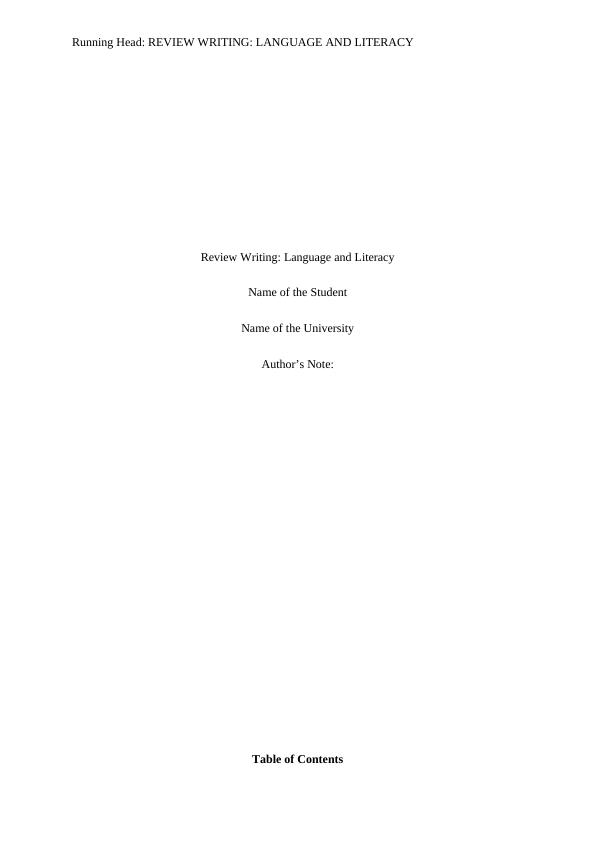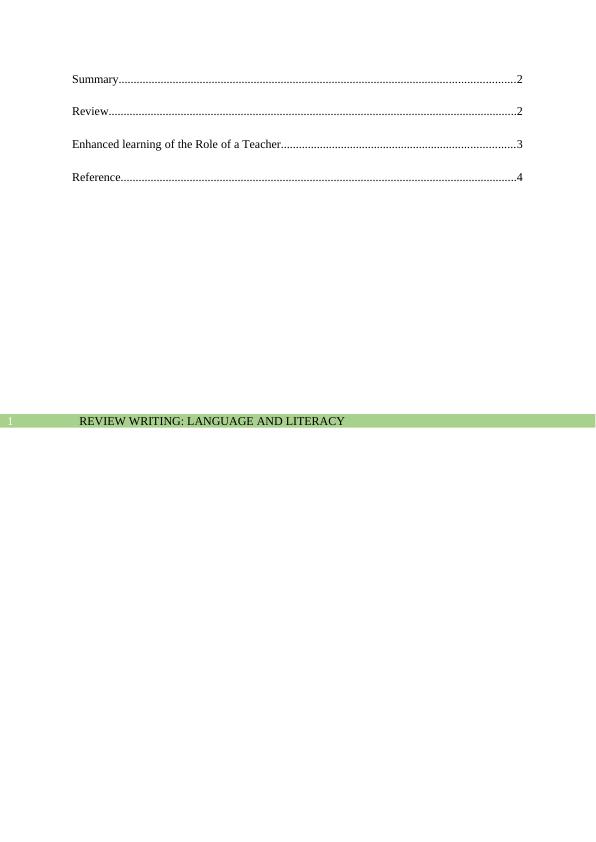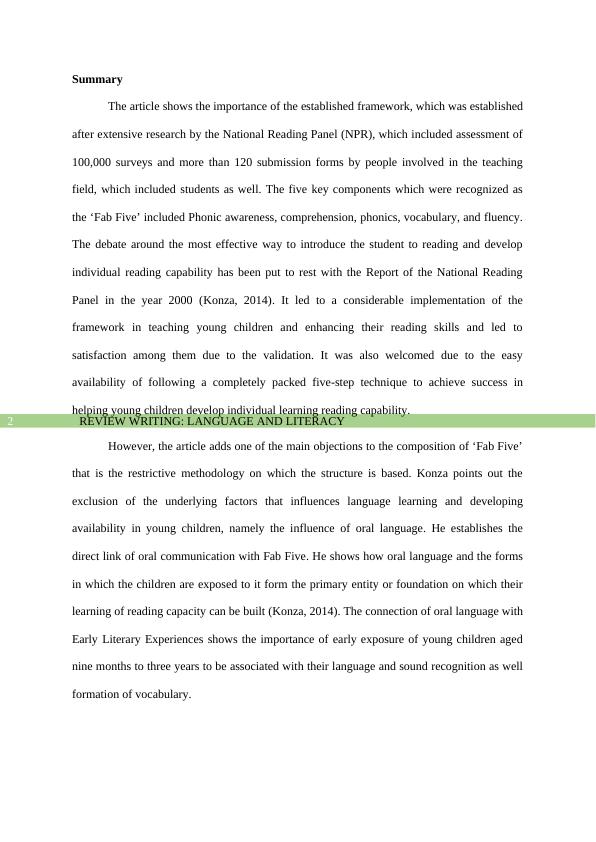Review Writing: Language and Literacy
Added on 2022-08-22
6 Pages924 Words18 Views
End of preview
Want to access all the pages? Upload your documents or become a member.
Supporting Phonics and Early Mathematics
|7
|908
|427
Assignment about Underpinning Theories and Approaches for Literacy Planning,
|14
|2258
|24
Evidence of Learning Using action Learning Principles
|12
|2842
|65
Literacy Skills PowerPoint Presentation 2022
|15
|924
|14
Teaching Early Reading: Strategies and Assessments
|10
|3054
|369
Theories and Pedagogies for Teaching Young Children to Read
|10
|2636
|335



